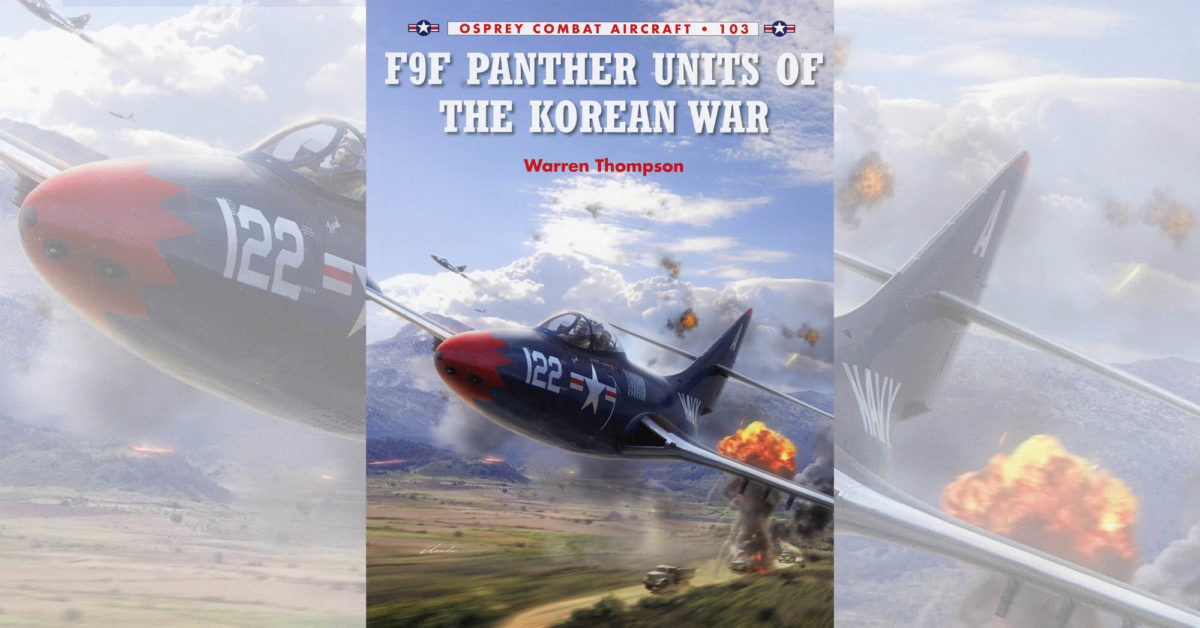F9F Panther Units of the Korean War by Warren Thompson, Osprey Publishing, Oxford, UK, 2014, $22.95
The acknowledged guru of Korean War aviation, author Warren Thompson, “has done it again.” The phrase would be a cliché if it didn’t translate directly as “distilled enormous research into a well-written history,” for that’s Thompson’s ethic, style and product. Oddly enough, however, there’s a sad piquancy to F9F Panther Units of the Korean War, for it evokes a time when the United States could determine what it had to do, then assembled the forces to go do it.
No one was more surprised, and in the current phraseology “uninformed,” than President Harry Truman when the North Koreans poured over the border to “unify” South Korea in June 1950. But as soon as he was informed, he knew what to do: respond immediately with all available forces, then add forces to the area as rapidly as possible. The first and best addition to available American forces was the U.S. Navy, then suffering, as were all our armed services, from hasty, wasteful downsizing after the build-up for World War II. It is this story that Thompson relates so well, beginning with the earliest strikes of the handsome Grumman F9F-3 Panthers. The first sorties were flown from USS Valley Forge. The Panthers of VF-51 made naval aviation history on July 3, 1950, as the first Navy jet squadron to fly a combat mission—and score the first kill.
The Navy’s strength built steadily, and land-based Marine Panthers introduced a new capability. Thompson’s well-written chronicle—always scrupulously accurate as to dates, unit designations, pilots’ names, etc.—is complemented by an incredible selection of photos, captioned to fully describe what’s happening, and how it relates to the story.
Enthusiasts will relish the appendices, detailing carrier deployments and both Navy and Marine operational and combat losses. The real connoisseur will appreciate Jim Laurier’s 33 color plates, with commentary. This is a valuable reference, typical of the author’s work—and worthy of inclusion in every library.
Originally published in the January 2015 issue of Aviation History. To subscribe, click here.





